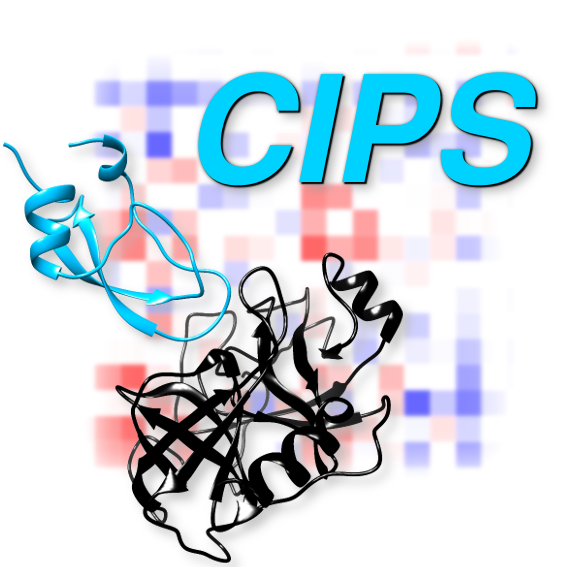
CIPS
Combined Interface Propensity for decoy Scoring
CIPS is a computational method for scoring protein docking decoys. The method is based on a combination of residue propensities and contact propensities. Contact propensities are retrieved from residue-residue contacts found at the interface of experimental structures from the Protein-Protein Docking Benchmark v5.0.
CIPS has been tested on the Dockground decoy benchmark and on the Complete Cross Docking benchmark.
This webpage provides instructions to download, compile, and run CIPS.
1. Download
CIPS is available here.
To extract the archive, type the following command:
$ tar -xzf cips-1.0.1.tar.gz
2. System requirements
CIPS has been developed under Unix operating system. It was tested on Linux Ubuntu and Mac OS X.
- The bash environment should be installed
- Xcode Tools should be installed (Mac)
- the location of perl executable should be included in PATH
- a C++ compiler is required and should support C++11.
3. Software requirements
- either NACCESS or FreeSASA
- Open Babel (optional)
Compiling C++ source code
To configure and compile the package, type the following commands:
$ cd cips-1.0.1/ $ ./configure $ make
4. Defining the environmental variables
Before running CIPS, some environment variables should be set:
$ export CIPS_PATH="/path/to/CIPS/" $ export PERL5LIB=$PERL5LIB:"/path/to/CIPS/" $ export NACCESS_PATH="/path/to/naccess" $ export FREESASA_PATH="/path/to/freesasa"
Either the third or the fourth line must be specified, depending on whether NACCESS or FreeSASA is used. The above lines might be included in ~/.bash_profile for convenience. "/path/to/CIPS/" is CIPS installation directory. "/path/to/naccess" is the directory where the executable "naccess" is stored. "/path/to/freesasa" is the directory where the executable "freesasa" is stored.
5. Usage
CIPS provides a batch mode to be run on a set of pdb structures. Two steps are required:
- computation of interface residues and contacts for each structure
- calculation of propensity scores.
Instructions for running CIPS are available here.
5.1. Quick run
Sample input and output files are available in $CIPS_PATH/example/.
To run the example, move to the working directory:
$ cd $CIPS_PATH/example/
run the computation of interface residues and contacts:
$ perl ../perl_script/compute_interfaces.pl --pdb-dir pdb_dir/ \ --complex-list 1AHW_list
and compute CIPS scores:
$ perl ../perl_script/propensity_score.pl --complex-list 1AHW_list \ --matrix-name cips --score-list 1AHW_cips_score
The output containing CIPS scores is written to "1AHW_cips_score".
5.2. Input preparation
"pdb_dir/" must contain the structures listed in "1AHW_list". The output containing CIPS scores is written to "1AHW_cips_score". Additional files, such as interface residues and contacts, are stored in "out/" by default.
5.3. Additional output
Other options are available, including the possibility of computing CIPS matrix on a different set of pdb structures.
For further information on how to prepare input for CIPS, and for detailed options description, please refer to the documentation provided with CIPS package.
Licence
CIPS package has been developed under the CeCILL licence.
Contacts
For questions, comments, or suggestions feel free to contact Francesca Nadalin or Alessandra Carbone.
References
If you use CIPS, please cite:
Francesca Nadalin and Alessandra Carbone. Protein-protein interaction specificity is captured by contact preferences and interface composition. Bioinformatics, 34(3):459-468, 2018.
Last Update January 2019


